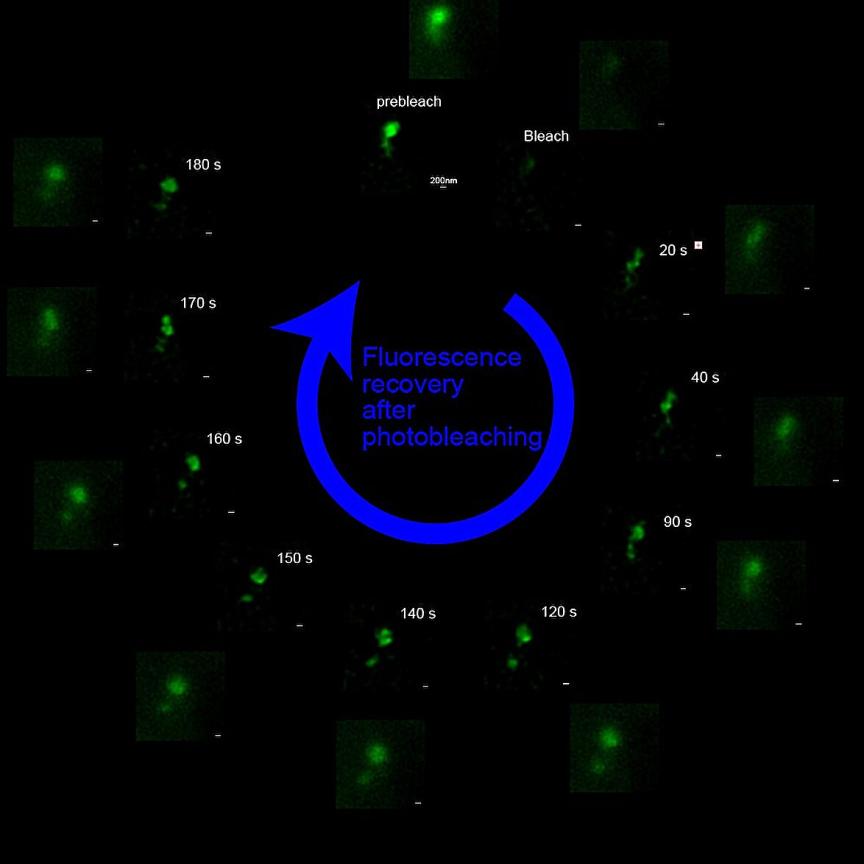Researchers in Hong Kong, London and California have found a new way to generate complex frequency waves (CFWs) which could advance super resolution imaging applications that overcome the diffraction limit of light.
To overcome the diffraction limit of traditional microscopes, Sir John Pendry from Imperial College London introduced the concept of super-resolution lenses, which can be constructed from negative index media or noble metals like silver. Subsequently, Professor Xiang Zhang, the current President and Vice-Chancellor of the University of Hong Kong (HKU), along with his then team at the University of California, Berkeley, experimentally demonstrated super resolution imaging using both a silver thin film and a silver/dielectric multilayer stack. These works have extensively promoted the development and application of superlens technology.
Unfortunately, all super-resolution lenses suffer from inevitable optical loss, which converts optical energy into heat. This significantly affects the performance of optical devices, such as super-resolution imaging lenses, which rely on the faithful delivery of information carried by light waves.
Optical loss has been the main limiting factor that has constrained the development of nanophotonics and super-resolution techniques for the past three decades. Many applications, including sensing, super resolution imaging, and nanophotonic circuits, would greatly benefit if this problem could be solved.
Recently, these three Universities have been able to propose a new synthetic complex frequency wave (CFW) approach to address optical loss in super-resolution imaging demonstration. The research findings were recently published in the journal Science.
“To solve the optical loss problem in some important applications, we have proposed a practical solution – using a novel synthetic complex wave excitation to obtain virtual gain, and then offset the intrinsic loss of the optical system,” explained Professor Shuang Zhang, corresponding author of the paper and also Interim Head of HKU Department of Physics. “As a verification, we applied this approach to the super-resolution lens imaging mechanism and theoretically improved imaging resolution significantly.”
The team further demonstrated their theory by conducting experiments using hyperlenses made of hyperbolic metamaterials in the microwave frequency range and polariton metamaterials in the optical frequency range. “As expected, we obtained excellent imaging results consistent with our theoretical predictions,” added Dr Fuxin Guan, the paper’s first author and a Postdoctoral Fellow at HKU.
Multi-frequency approach to overcome optical loss
In this study, the researchers introduced a novel multiple-frequency approach to overcome negative impacts of loss on superimaging. Complex frequency waves can be used to provide virtual gain to compensate for the loss in an optical system. Optical measurement directly based on complex frequency waves needs to be performed in the time domain, which involves complicated time-gated measurements and therefore has not been experimentally realised thus far.
The team used the mathematical tool Fourier Transformation to break down a truncated CFW into many components of different real frequencies, greatly facilitating the implementation of CFWs for various applications, such as superimaging. By carrying out optical measurements at multiple real frequencies at a fixed interval, it is possible to construct the optical response of the system at a complex frequency by mathematically combining that of real frequencies.
As a proof of concept, the team started with superimaging at microwave frequencies using a hyperbolic metamaterial. The hyperbolic metamaterial can carry waves with very large wave vectors (or equivalently very small wavelengths), that are capable of transmitting the information of very small feature sizes. However, the larger the wavevector, the more sensitive the waves are to optical loss. Therefore, in the presence of loss, the information of those small feature sizes gets lost during the propagation inside the hyperbolic metamaterial. The researchers showed that, by appropriately combining the blurred images measured at different real frequencies, a clear image at a complex frequency was formed with a deep-subwavelength resolution.
Overcoming optical loss in photonic systems
The team further extended the principle to optical frequencies, employing an optical superlens made of a phononic crystal called silicon carbide, which operates at the far-infrared wavelength of around 10 micrometres. In a photonic crystal, the lattice vibration can couple with light to create the superimaging effect. However, the loss is still a limiting factor in the spatial resolution. Although the spatial resolutions of imaging at all the real frequencies were limited by the loss, ultrahigh-resolution imaging can be obtained with synthesised CFWs that consist of multiple frequency components.
‘The work has provided a solution to overcome optical loss in optical systems, a long-standing problem in nanophotonics. The synthesised complex-frequency method can be readily extended to other applications, including molecular sensing and nanophotonic integrated circuits,’ said Professor Xiang Zhang, President and Vice-Chancellor of HKU. He hailed this as a remarkable and universally applicable method, ‘This can be leveraged to tackle loss in other wave systems, including sound waves, elastic waves, and quantum waves, elevating imaging quality to a new height.’


